Understanding light sources Physical Science Worksheets for Ages 4-9
6 filtered results
-
From - To
Unlock the wonders of light with our "Understanding Light Sources" physical science worksheets, designed for children aged 4-9. These engaging resources from Kids Academy introduce young learners to the basics of natural and artificial light sources. Through fun activities and illustrations, kids discover how light is essential in our daily lives and explore various sources like the sun, lamps, and candles. Perfect for budding scientists, these worksheets foster critical thinking and observational skills, making science both informative and exciting. Give your child a bright start with our expertly crafted materials that illuminate the fascinating world of light!
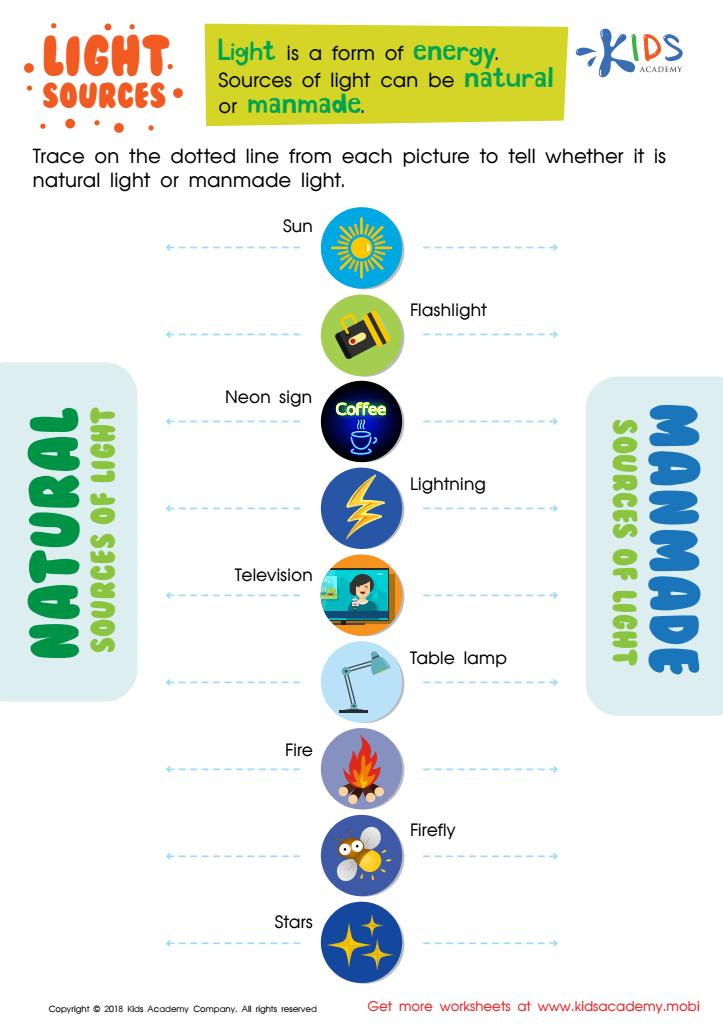

Natural and Manmade Light Sources Worksheet
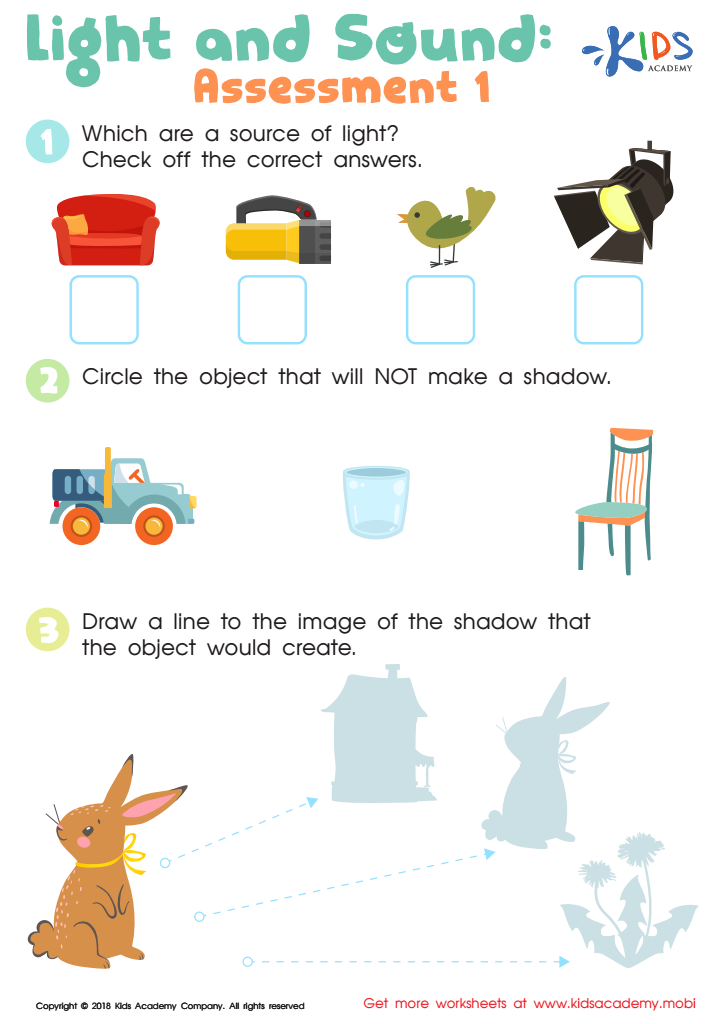

Light and Sound: Assessment 1 Worksheet
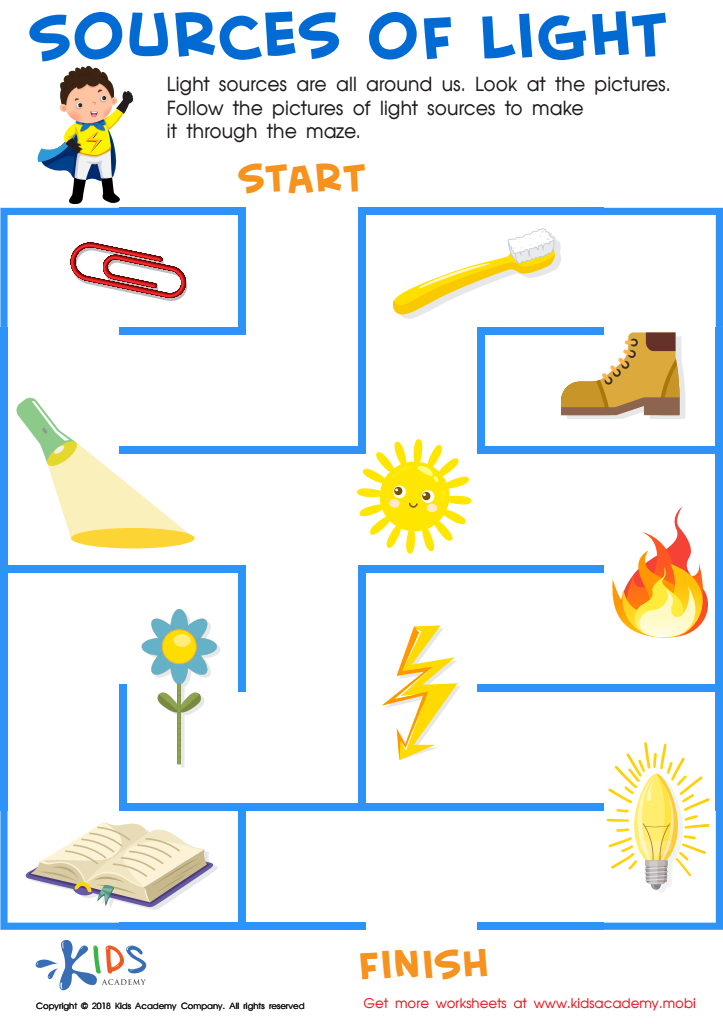

Sources of Light Worksheet
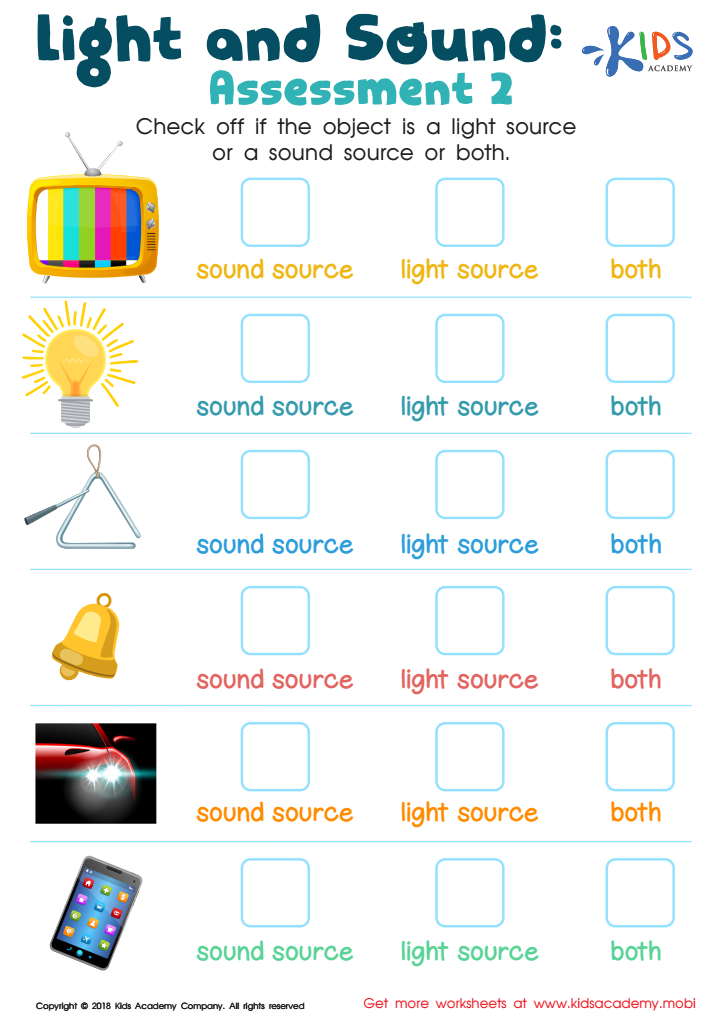

Light and Sound: Assessment 2 Worksheet
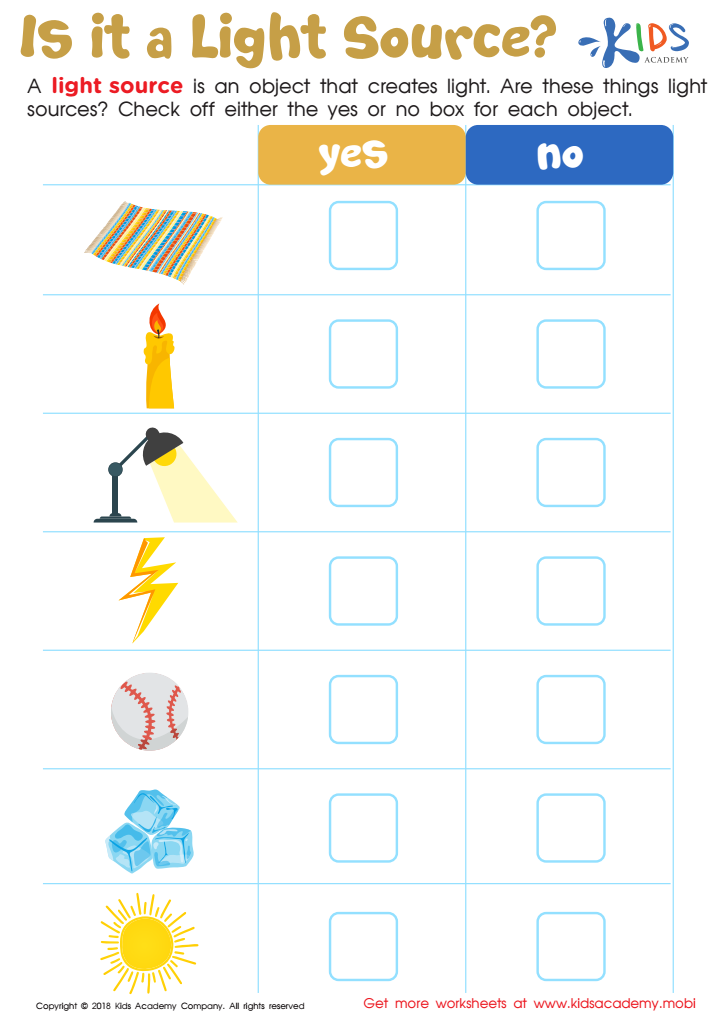

Is It a Light Source? Worksheet
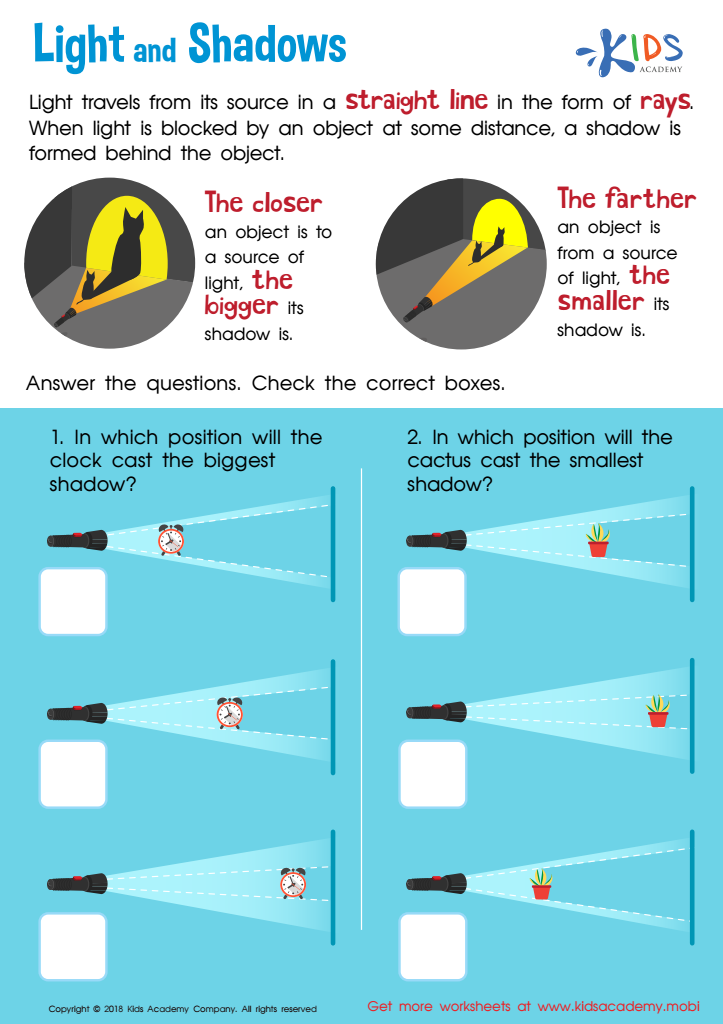

Light and Shadow Worksheet for Grade 3
Understanding light sources is a fundamental concept in physical science that lays the groundwork for many scientific and everyday discoveries. For children aged 4-9, curiosity and sense of wonder about the world are at their peak, making it the ideal time to introduce basic scientific principles, including light sources.
Firstly, helping children comprehend light sources nurtures their natural curiosity and critical thinking skills. Understanding the differences between natural light (sunlight) and artificial light (lamps, LEDs, etc.) teaches kids how to make observations and categorize information, foundational skills in the scientific method.
Secondly, knowing how light affects their daily lives—from helping plants grow to enabling them to see and play—forms the basis for more complex science learning in the future. Simple activities like identifying different light sources or experimenting with shadows engage kids in hands-on learning, making abstract concepts tangible.
Lastly, understanding light fosters safety awareness. Recognizing how different sources of light work helps children understand precautions, such as why they shouldn’t look directly at the sun or the importance of wearing seat belts in daylight and headlights at night.
In summary, teaching kids about light sources not only satisfies their innate curiosity but also builds essential scientific thinking skills and promotes practical safety knowledge, all vital for their overall development.

 Assign to My Students
Assign to My Students





.jpg)









